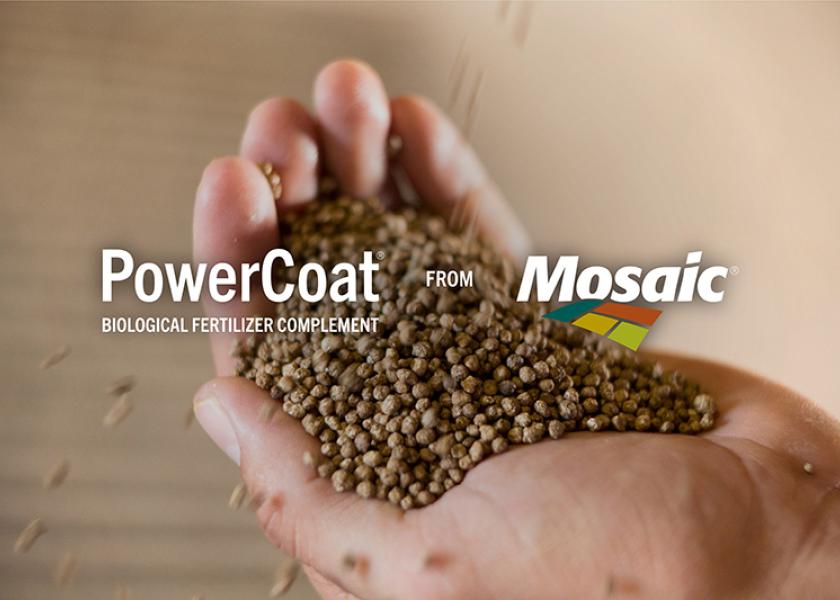Biological Pair of Products Highlights “Advanced Crop Nutrition”

Mosaic is aiming to elevate its “balanced crop nutrition” mantra with two biological products reframing the phrase to “advanced crop nutrition.”
Both BioPath and PowerCoat contain bacillus bacteria that increase nutrient availability, uptake and use by the plants, leading to increased yields.
The Plant Growth Promoting Rhizobactera products are differentiated from other biologicals on the market due to:
- 18-month treatment viability—allowing two seasons of use after blending or coating
- Stability—two-year shelf life
- Ease of Use—application fits into conventional retail setups
- Consistency—Infield trials to date, 80%-win rate.
- Economics— The goal is 3 to 1 ROI for a grower.
- Science—the product has been in some markets since 2014
BioPath is formulated for liquid applications (sidedress or at-plant with starter), and PowerCoat is formulated as a coating for bulk dry fertilizer.
“BioPath is tank mix compatible with the majority of crop protection and fertilizer products,” says Dion Pearce product manager, Soil Health Portfolio, The Mosaic Company. “And it can be pre-blended in late winter or spring to be ready for the upcoming season. The additional benefit with BioPath is the microbes are still effective 18 months later—even for the next season if need be.”
PowerCoat is an oil-based formulation applied at the retailer as a coating (2 to 3 quarts application rate). Pearce says its shelf life after treatment depends on the fertilizer type, for example with urea, the 18-month shelf life is maintained.
Pearce likens the formulation with the bacterial strains to a turtle shell, in that when the microbes are in an adverse condition, they are protected in spore form. But they catch a ride with the fertilizer and once they reach the root zone in the soil, they move into vegetative form and go to work.
“The bacteria themselves are very robust,” Pearce adds.
The products are being introduced for the first time in the Midwest row crop market for 2023. Previously, the products have primarily been used in the Northwest U.S.—mainly sugar beets and potatoes.
“Mosaic has been educating the market about balanced crop nutrition, and we’ve been the experts in that space for years now to show the need for a balance of micronutrients and macronutrients to reach yield potential,” Pearce says. “As the company learns more about the soil microbiome, the focus is now evolving to advanced crop nutrition—and taking the fertility piece with balanced nutrition and factoring in the rhizosphereand how a plant’s root system and the soil best interact. ”
What’s next?
Pearce says the company has a pipeline of further development with biologicals and crop nutrition. He says the portfolio will continue to expand as it explores other live microbes that provide agronomic advantages to growers, like nitrogen fixation and P utilization. Pearce also gives a nod to product demands for a metabolite or small molecule technologies to address abiotic stress: drought, heat, salinity and cold.
“With the products coming through the pipeline, there is so much opportunity to identify the next biological advancement ,” he says. “With biologicals in general, we are on a growth curve where we’re moving up rapidly, ... we’re at 5 to 10% on the upswing and it’s going to go fast. In the past you’ve had waves in the biological space. But as an industry we are starting to better understand how and where biologicals work, and where they don’t work. Products must be placed appropriately, by region, soil type and crop.”
Pearce says the company has strong goals for this row crop launch and shares “it’s about getting more efficiency out of the fertility.”







